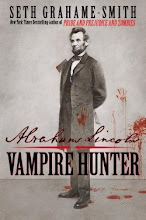ghost light is a bare light bulb left on over night in a theater after a production is over.
There are several theories as to the origin of the ghost light. One suggests it goes back to the time of William Shakespeare, where a candle would be left burning after a play to ward away the ghosts of past performances. [1]
More practically, a ghost light performs much the same function for a theatre as a night light does for a bedroom by illuminating the stage to prevent injury when the theatre is not lit by either sunlight or the house lights. . . Wikipedia
. . .Then the track curved past a hummock of Mormon tea, and there shone the Maryboy ghost light, punctuating the night with a bright yellow spot.
CHEE MADE THE LEFT TURN past the cottonwood Lucy Sam had described into two sandy ruts separated by a grassy ridge They led him along a shallow wash toward the light. The track dipped down a slope and the bright spot became just a glow. He heard a thud from somewhere a long ways off. More like a sudden clapping sound. But he was too busy driving for the moment to wonder what caused it. The track had veered down the bank of the wash, tilting his police car. It entered a dense tangle of chaparral, converted by his headlights into a tunnel of brightness. He emerged from that.
The ghost light was gone.
Chee frowned, puzzled. He decided it must be just out of sight behind the screen of brush he was driving past. The track emerged from the brush into flat grassland where nothing grew higher than the sage . Still no ghost light. Why not? Maryboy had turned it off, what else? Or the bulb had burned out. Out here, Maryboy wouldn't be on a Rural Electrification Administration power line. He'd be running a windmill generator and battery system. Perhaps the batteries had gone dead. Nonsense. And yet the only reason one puts out a ghost light is because, for some reason, he believes he is threatened by the spirits of the dead. And if he believes that, why would he turn it off before Dawn Boy has restored harmony to the world? And why would he turn it off when he'd seen he had a visitor coming? Had Maryboy been expecting someone he would want to hide from?
Chee covered the last quarter mile slower than he would have had the light still been burning. ~Tony Hillerman The Fallen Man (quoted from: Old World Magazine)
A chindi (Navajo "ch'íįdii") is the ghost of the Navajo tribe believed to be released at dying breath. The chindi is almost always considered to be an evil force, avenging some form of offense to the person. The Navajo believe that contacting such a spirit can cause illness (Ghost Sickness), or death. It is also believed that a chindi can be used to cause harm upon someone else. Dust devils are referred to as chiindii and are said to be these spirits. Clockwise dust devils are good spirits and counterclockwise are bad. . . Wikipedia
Ghost sickness is a culture-bound syndrome which some Native American tribes believe to be caused by association with the dead or dying and is sometimes associated with witchcraft. It is considered to be a psychotic disorder of Navajo origin. Its symptoms include general weakness, loss of appetite, a feeling of suffocation, recurring nightmares, and a pervasive feeling of terror. The sickness is attributed to ghosts (chindi) or, occasionally, to witches. . . Wikidepida
Death and Afterlife. Traditionally, Navajo were morbidly afraid of death and the dead and spoke about them as little as possible. The dead were buried promptly and without public ceremony, although a great many ritual taboos were observed by the close kin of the deceased and by those who handled the corpse. Ideas about the afterlife were not codified in a Systematic way, but varied from individual to individual. There was no concept of rewards and punishments for deeds done in this life; it seems that the afterworld was not thought of as a happy or desirable place for anyone. . . World Culture Encyclopedia
When I conceived of my "Twitter handle", I did so with the Navajo cultural idea in mind. One problem of course is that most of my so-called knowledge about the Navajo way comes from a white man, Tony Hillerman. His books are fun, but truth? Don't know. I suppose I should examine some primary documents.
























No comments:
Post a Comment